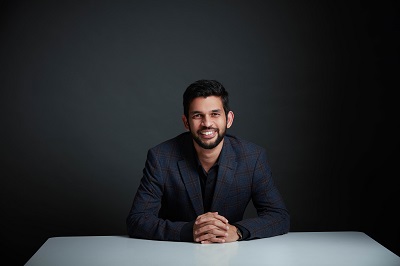After a number of weeks speaking to experts from differing customer roles, from a variety of company sizes, some key themes have emerged.
From those I consulted there is clearly a differentiation of challenge experience based on: maturity of role, size of company, legacy or start-up and so on. However, the following three themes unite all as challenges they face together, even if they do experience them in slightly different ways.
Throughout this article I refer to Customer work/role as an all-encompassing title for those working within Customer: Management, Experience, Design, Engagement and Success.
Showing their Worth and Obtaining Executive Buy-In
 Within business we have a cultural fixation on numbers, we want to see trends and patterns – how else are we to know where we currently stand? This is far more simple for a department like Sales, where it is easier to watch profit figures rise and decrease and then determine one’s actions upon it. However, this language often does not translate to the work that a Customer role does.
Within business we have a cultural fixation on numbers, we want to see trends and patterns – how else are we to know where we currently stand? This is far more simple for a department like Sales, where it is easier to watch profit figures rise and decrease and then determine one’s actions upon it. However, this language often does not translate to the work that a Customer role does.
I can hear the cries now as I write this, “What about NPS, that’s an easy way to measure and apply quantitative measures and thus showing your worth?” And I would agree, it is easy – hence why so many companies still use it as a way to track Customer Engagement and experiences. However, my rebuttal is simple – it’s not working as a communicative devise of worth. If out of all my research this theme comes up time and time again, it shows that the NPS is not a good enough measure to qualify the value of Customer work. There can be an argument made for qualitative vs quantitative work; how could you reduce a customer’s experiences into a number? But that’s another debate. The issue here is that the worth of the Customer role and their work is not reaching the ears of the rest of the company, and the executives.
Not only is there a barrier in language, but also a cultural jamming in many companies – there is a theme of “It’s nice to have” rather than a “It’s crucial we have…” – This is directly related to the current inability to properly communicate the worth of the Customer role. This cultural issue is bizarre given that in today’s climate Customers are choosing a more personalized and humanized approach to companies, rejecting those that regard them as just another number. Which would give the assumption that Customer work would be front and center of every companies c-suite – but alas that is far from the truth.
Customer & Company Voice
This challenge can be divided into two: passive and active.
The passive voice is the branding and overall messaging of a company. I’ve been told by experts from some of the biggest legacy companies, through to the new flexible start-ups that Customers are buying into a company’s brand and image far more than they used to. Delving into why constitutes a whole other article, so I won’t do it here.
Take Slack, Uber, Airbnb for example– these are all companies who have done fantastically well in recent years. One of the reasons why is due to the passive human voice that the Customer can communicate with. Compare this to one of the larger legacy companies who has been around for hundreds of years, and suddenly that passive personalized voice isn’t as present.
The second part is the active voice, how a company actually communicates with their customers – This could be as physical as via email, phone, chat bot etc. but more interestingly the challenge most present was regarding the departmental silos that appear with the active voice.
I’ll use Corinium as an example. As a Producer I am in contact with an account regarding their speaking position at this year’s CCOI Fall event, my marketer may be in contact with them about a promotional deal to let their team join us, our content director may want to speak with them about a website feature… You see where this is heading.
The fabled 360-degree view of the customer becomes lost, and we all target our customers for our individual needs, without thinking or consulting other departments. A unified active voice is a huge part to customer satisfaction and is rarely achieved due to the operational complexities. Suddenly rather than dealing with a human whom we are attempting to communicate with, we’re dealing with a number and a goal. Removing the personalization and creating a generic active voice.
Digital Noise

The word “Innovation” gets banned around far too easily and this would seem especially true for this market. It is saturated with solutions, products, tools to help with the Customer role. Determining what is noise, and what is genuine innovation is a huge part (and challenge) for the Customer role.
There are many angles in which this challenge is present.
Firstly, from the top down, many have told me they have execs asking why they’re not implementing chat bots – of which they think they’ve only been asked this because they saw an article on LinkedIn and not actually based on any real customer experience consideration. However regardless to whether the executives are applying pressure via ignorance or genuine inquiry it can create a situation where by the Customer role is required to be seen “doing something” – and just implementing a chat bot (for example) may not be 1) what the customer wants 2) what the customer needs, and most importantly 3) unable to happen due to the Chabot needing so much data and intel to feed it before it can begin.
There is also a challenge from the bottom up, from the customers themselves. This is where we see generational issues etc coming into play. Taking the hotel industry for example, one CCO I spoke to coming from a large chain of Hotels said that he plays a constant balancing act between Gen X-Y and the older generations. Not only is he having to wade through all the digital noise, he is then having to decide who he’d prefer to appeal to, the younger more tech savvy customer, or the older more traditional customer. Although some middle ground can be found, to really appeal to the customer we hark back to the need for personalization, and it’s really challenging to personalize an experience when you have 50 years of age difference between the customers.
There are obviously far more than three challenges present for those in CCO and similar roles. This has purely been an exercise to provide an overview to the current big issues being faced.
We will be landing in New York on the 25th and 26th of September 2019 with our annual Chief Customer Officer and Influencer 2019 event.
If you want to know:
- How to communicate your worth
- Show your ROI
- Get Executive Buy-in
- Nurture the perfect Customer Voice
- And navigate the current digital technology market
Please join us! https://cco-fall.coriniumintelligence.com/



.png)





